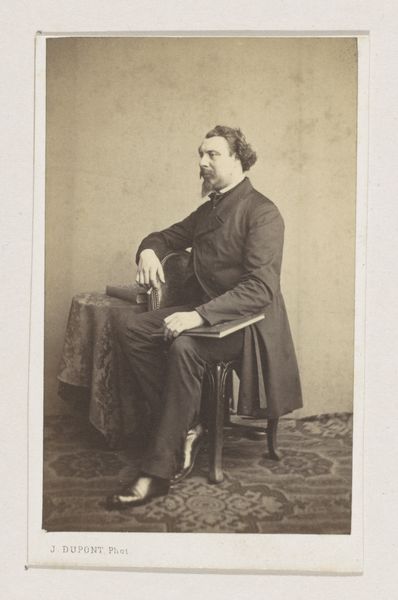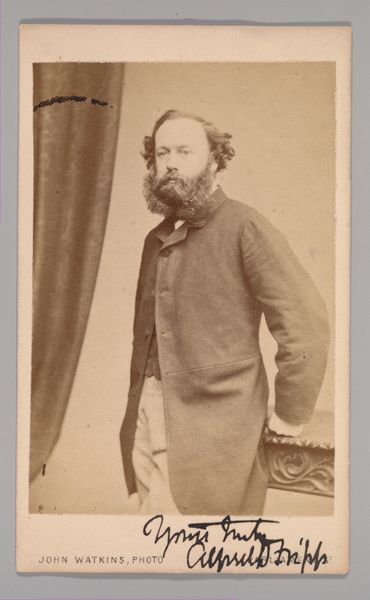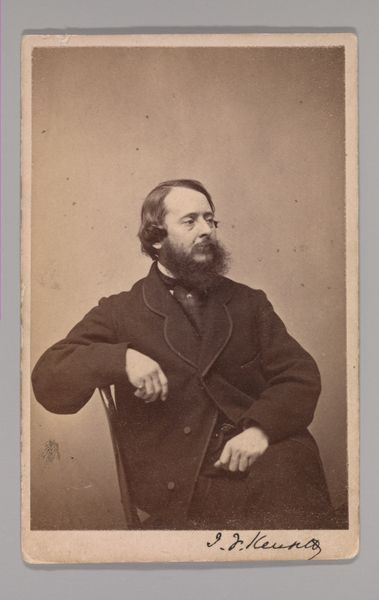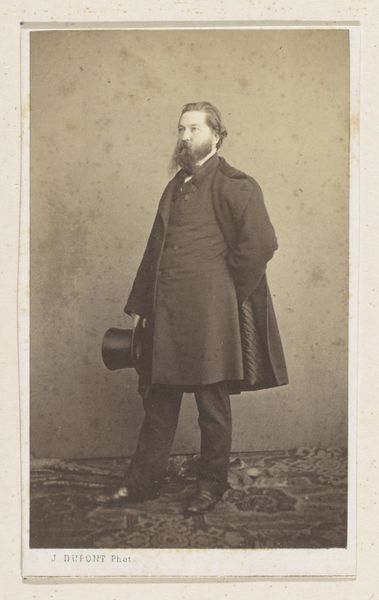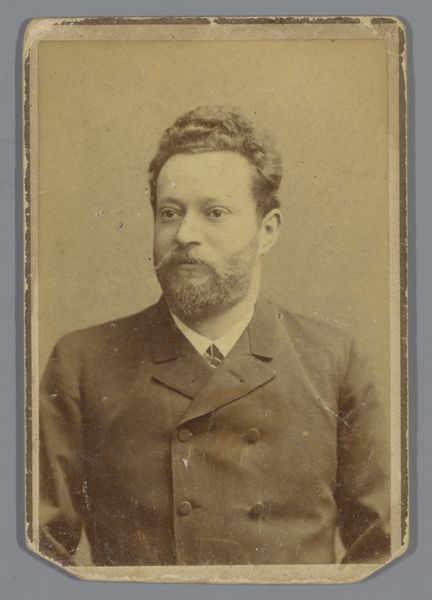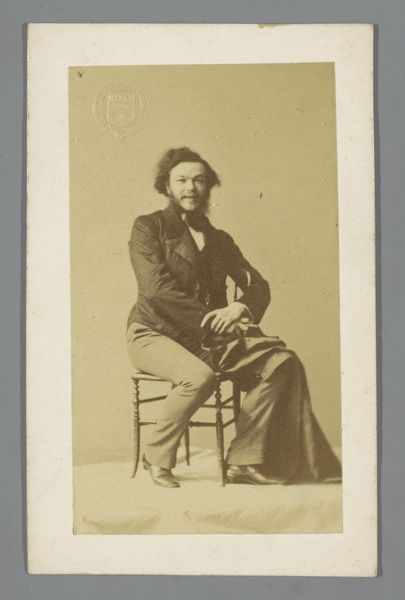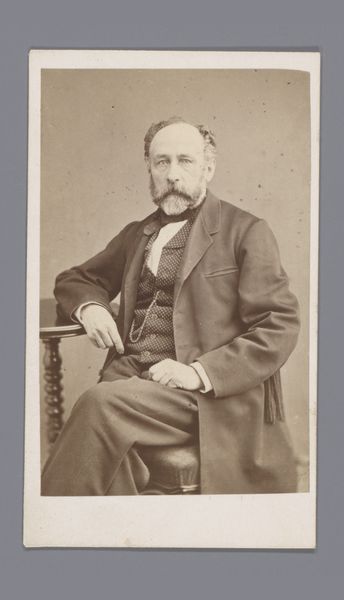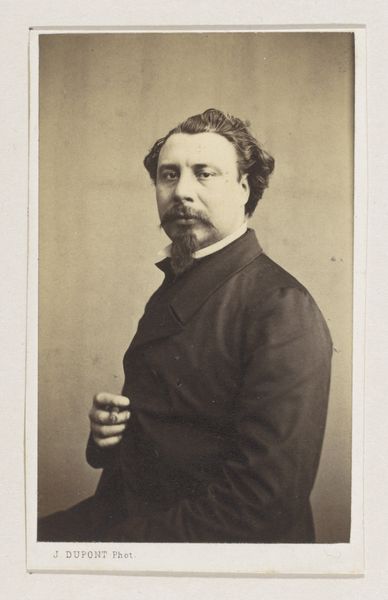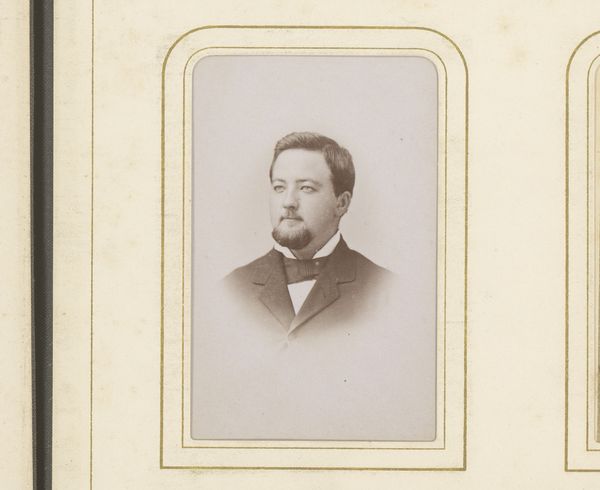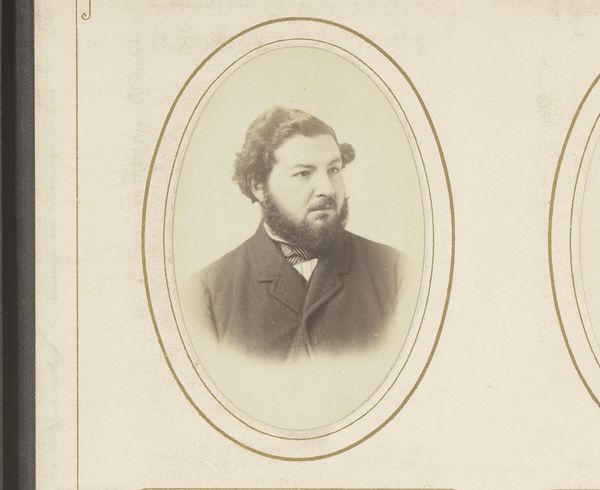![[George Price Boyce] by John and Charles Watkins](/_next/image?url=https%3A%2F%2Fd2w8kbdekdi1gv.cloudfront.net%2FeyJidWNrZXQiOiAiYXJ0ZXJhLWltYWdlcy1idWNrZXQiLCAia2V5IjogImFydHdvcmtzLzFjMGIwMDk1LWNmZTctNDM3Mi04NDI1LTZmMThlNTU1MzQ3Yi8xYzBiMDA5NS1jZmU3LTQzNzItODQyNS02ZjE4ZTU1NTM0N2JfZnVsbC5qcGciLCAiZWRpdHMiOiB7InJlc2l6ZSI6IHsid2lkdGgiOiAxOTIwLCAiaGVpZ2h0IjogMTkyMCwgImZpdCI6ICJpbnNpZGUifX19&w=3840&q=75)
photography, albumen-print
#
portrait
#
print photography
#
studio photography
#
photography
#
historical photography
#
19th century
#
men
#
albumen-print
Dimensions: Approx. 10.2 x 6.3 cm (4 x 2 1/2 in.)
Copyright: Public Domain
Curator: Let's delve into this captivating albumen print from the 1860s, simply titled "[George Price Boyce]." The image is housed here at the Metropolitan Museum of Art. Editor: It's a classic studio portrait, somber, with a prevailing brown monochrome—but with sharp clarity of details on Boyce's tweed suit, quite intriguing for the period. Curator: Indeed. What strikes me is how the photographers, John and Charles Watkins, used the conventions of portraiture at the time to shape public perception. Boyce was, after all, a significant figure in the Pre-Raphaelite movement. Editor: The materiality is also very present here. It makes you think of the process. Imagine coating the paper with albumen, carefully positioning the sitter in the studio…it’s an image made with incredible material investment for a relatively intimate result. Curator: And that speaks to the rising prominence of photography and how portraiture democratized image-making. Previously limited to the wealthy who could commission painted portraits, photography offered a more accessible, though still carefully mediated, representation. Editor: Right. Consider the labor involved – preparing the chemicals, the exposures. And albumen itself comes from eggs! These details give insight to how laborious photography was before industrialization streamlined production. Curator: I also notice how this image plays with the presentation of artists in the public eye. We see Boyce as a serious intellectual, far from the Bohemian ideal sometimes associated with artists. It solidifies the respectability of the profession in the Victorian era. Editor: He is shown more as a businessman and someone to be respected; also, someone from which you would commission art and someone who knew what he was doing and you can trust. It's like the original business card! Curator: Ultimately, this portrait is not just a depiction of George Price Boyce. It's a reflection of the social and cultural landscape that shaped how artists were seen, understood, and celebrated. Editor: Agreed. By looking into the production, materials, and how those intersected with society’s rising art culture at the time we can reveal an understanding about a time that helped make our own.
Comments
No comments
Be the first to comment and join the conversation on the ultimate creative platform.
